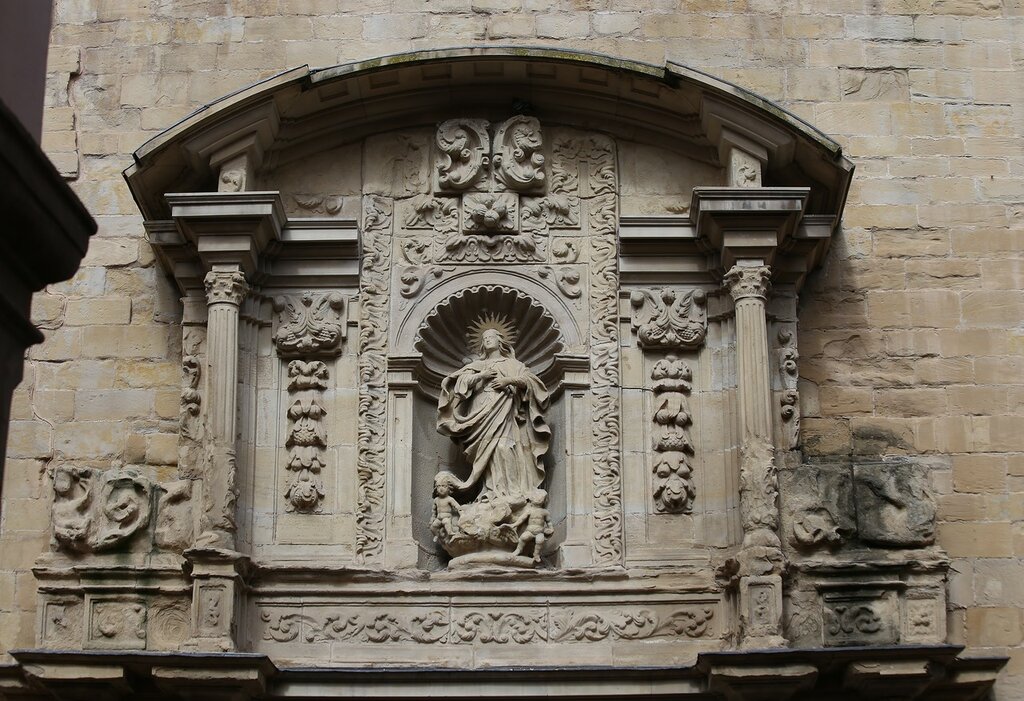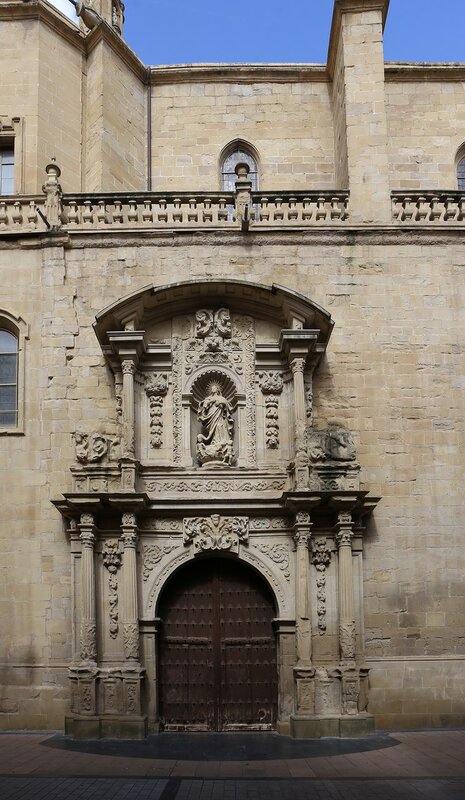Logrono. Concatedral de Santa María de la Redonda
The symbol of the city,the Cathedral of Santa Maria de La Redonda (on the map), opens its main facade to the Market square.

The settlement on the site of the present logrogno was founded by monks who fled from the Muslim invasion in the ninth century.

In the 10th century, the small monastery became one of the stopping points for pilgrims walking along the path of St. James, and a settlement was formed around it, consisting of artisans and small traders.

Sculpture of St. James on one of the turrets.

The first information about St Mary's Church in Logrono treat 1196-1199 year. The temple was located South of the market square, where artisans lived at that time. The parish was named Santa Maria de La Retonda, because the Church had an octagonal shape and resembled a rotunda.

In the thirteenth century, the settlement experienced rapid demographic growth, and the number of parishioners, as well as parish income, grew accordingly. In 1431, the settlement received the status of a city, a year later there was a community of Dominicans, and in 1435, the Church from the parish became a monastery, without losing, however, the function of a parish. The population of the city increased, which required the construction of a new temple, which was started in 1516.

The new monastery Church was built by 1537 under the direction of the architect Maestro Juan de Regil. The temple has inherited the old name-Santa Maria de La Redonda. In 1607, the interior of the Church was rebuilt, and the chapel of Jesus Christ (capilla del Cristo) was built behind the altar. The work was supervised by architects Juan de Lorena and Arano de Bruselas (Juan de Lorena y Arnao de Bruselas).

Initially, the temple had simple simple entrance doors. In 1700, work began on the decoration of the portals, the main one bearing the name of St. Martin, and the side one, the virgin Mary.

The “maestro de escultura " was invited to perform the work” Sebastian de Porto and Fernando de La peña, the protals were completed in 1709.

The main portal of the Cathedral is made in the form of a retablo-an altarpiece that occupies the entire height of the temple. This is a purely Spanish element of Church decoration, which appeared in the middle of the 14th century.




The main entrance to the temple is fenced with a beautiful wrought-iron grating.

Portal Of The Virgin Mary.



In the 16th century, two towers were added to the facade, which turned out to be a clearly unsuccessful project - their small height and disproportionality became a constant subject of complaints from parishioners. In 1472 the Bishop took a decision to erect a new bell tower.

The two towers, called Las Gemelas (the twins), were completed in 1756. The prototype of the towers is the bell tower of the Church of St. Thomas in the Rioja city of Haro, built in 1627. Architects Juan Batista Arbiter and Martin Bertoa (Juan Bautista Arbaizar, Martin Beratua). Now the towers of the Cathedral are the symbol of logrogno.

Gargoyles-drains are made quite simply, without sculptural decorations.

On the South wall, you can see the original clock with three dials-separately for hours, minutes and seconds.

In 1931, the Cathedral was declared a national monument.

In 1959, the Church received the status of a co-Cathedral.
